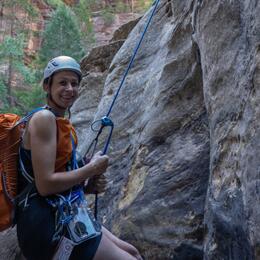Climate change is the greatest challenge facing today's birds. Research from National Audubon found that 389 North American bird species are vulnerable to extinction from global temperature rise, with more than half of these species’ current ranges forecasted to become inhospitable within a century. However, the prognosis is not all bad; the same study found that, by stabilizing carbon emissions and holding warming to 1.5 degrees Celsius above pre-industrial levels, nearly 150 of the 389 vulnerable species would no longer risk extinction.
None of us can ignore the effects of climate change. We see them all around us, every day, everywhere. Wildfires rage across the American West each summer, while increasingly severe storms ravage the Gulf Coast and cold-water marine species disappear from the Bering Sea. Last autumn, Audubon Alaska began collecting climate change stories from around world as part of the Arctic Refuge Virtual Bird Festival, asking the public to share experiences of climate impacts in daily life.
The result is a growing catalog of climate stories documenting invasive species, mild winters, dangerous air quality, landslides, unusual wildlife behavior, and other Events, and is a testament to the perils we all face if we do not take swift and decisive action on behalf of our warming planet.
You can find an interactive map featuring these stories on the Audubon Alaska website (https://ak.audubon.org/conservation/climate-stories). We also encourage you to submit a story of your own (https://tinyurl.com/audubonclimatestories).
Here are a few of the stories we have collected from around Alaska:
“During a long-term study, we found that Arctic‐breeding shorebirds have experienced increased phenological mismatch (i.e., chicks hatching after peak insect emergence) under earlier snowmelt conditions, resulting in reduced growth and survival of chicks.” ― Sarah (Utqiaġvik)
“Spruce beetles are infesting our forests and killing spruce in droves due to warmer winters. Normally, the cold would manage populations to ensure a healthy balance. Now, we're facing the use of pesticides to manage the boom in beetle populations.” ― Katrina (Craig)
“While hiking a new-to-me trail, I discovered the invasive vetch plant species quite a distance from the road corridor. This is a plant that is becoming more invasive and is not native to Alaska. It was spreading and taking over native plants. So sad.” ― Ryan (Anchorage)
“In early 2016, thousands of Common Murres were so starved that they began showing up in interior Alaska lakes and rivers in search of food. This very unusual behavior was caused by a major warming of the Gulf of Alaska known as The Blob." ― Melanie (Anchorage)
“In early December 2020, a series of large Pacific Gulf storms created three separate storm events. This caused a severe rain on snow event that resulted in over 50 landslides across the area and claimed two lives.” ― Natalie (Haines)
“An increasing number of Brant are now overwintering in Alaska (Izembek Lagoon and surrounding areas); up from <5% of the overall winter brant population in the 1980-1990’s (~7,500 birds), to over 38% (56,000) in 2021 (USFWS 2021), likely due to warming.” ― Heather (Izembek NWR)




